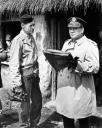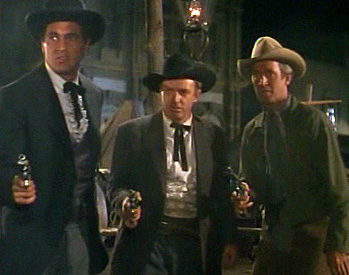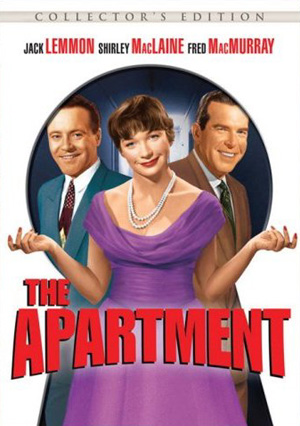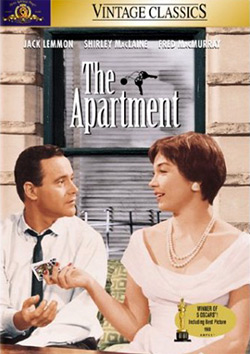Okay, so the title is a little misleading because in every interview I’ve read or seen, people have nothing but glowing words for Fred Astaire. He was a gentleman through and through. The worst thing I’ve ever read was that he was a…perfectionist.
I figured now would be a good time to profess my love for Mr. Astaire since he’s one of the stars in Stanley Kramer’s On the Beach–which is showing February 27 at 8 pm on TCM. Nuclear war has broken out across the nation and Australia is one of the last places where people are still alive. Before we go any further, I should warn you that it’s an extremely depressing movie. It’s not good to watch if:
1. You’ve had a terrible day. You’ve lost your job. Your dog or cat died.
2. You are a woman who’s currently going through PMS.
3. You spent the entire afternoon searching through myspace, checking out your old classmates profiles, only to find out that a good majority of them are all married with kids and now you realize that yes, you are going to die alone. If you were cast in a classic movie, you’d be the “Spinster.” And since you’re terrified of cats, even the title of ‘crazy cat lady’ is now out of your future.
Ahem.
Not only is On the Beach depressing, but it’s a bit draggy at times. It’s a good solid story though, which should be more than enough reason to tune in and at least give it a chance. The other members of the cast include Gregory Peck as Towers, the commander of the USS Sawfish and Ava Gardner as Moria Davidson, who (of course) fall in love with each other. Rounding out the cast are Donna Anderson and Anthony Perkins (when he could still be viewed as a sweet and innocent actor instead of a nutjob) as a young married couple.
And of course there’s Fred Astaire. Legend has it that Astaire got the part of the scientist, Julian Osborne, because of Mrs. Stanley Kramer. She happened to be watching an Astaire movie on the late show and knowing her husband’s search for an actor to play the scientist, she turned to him, pointed at the tv and said, “There’s your scientist.” Kramer was dismissive at first, but he soon realized that she was right. When they met, Astaire was curious to why he was chosen for such a role. Kramer answered, “You’ve got something most actors don’t have, Fred. Integrity. It shines out of you.” And Astaire accepted the part.
It’s seems like a bit of stunt casting at first. Fred Astaire in a non-dancing role! But he’s absolutely wonderful. It’s because of this movie that I became a huge Fred Astaire fan. Kramer was right on the money when he said Astaire had “integrity.” That’s why his characterization of Julian is so terrific. We first see him at a local get together, where he’s downing drinks and feverently discussing the nuclear war with another partygoer. Since he’s a scientist, he feels that people are blaming him for the mass destruction and ends his drunken rant by concluding that everyone is doomed. He’s not exactly the kind of guy you want at your party, but Astaire’s acting ability is a revelation. Anyone thinking that he was strictly a song-and-dance man is proven wrong. There’s none of that lighthearted joy that’s so prevalent in his musicals. Something is seriously bothering Julian Osborne. There’s a bitterness that he’s trying to mask by consuming alcohol. You want to know what’s going on his mind and why he’s like this.
Another pivotal scene for Astaire takes place later in the film. By this time, Cmdr. Towns has asked Julian aboard the USS Sawfish, hoping to find out who (or what) is sending a mysterious morse code signal that’s based in San Francisco. When all the crew members are sitting around and joking with one another, one of them asks Julian who started the war, to which he sarcastically answers, “Albert Einstein.” He then delivers a guilt-ridden monologue which explains where his mind is at: “Everyone had a bomb, an atomic bomb, a counterbomb, countercounterbombs–the devices outgrew us, we couldn’t control them. I know. I helped build them. God help me.”
During this scene, Kramer closes in on Astaire’s face, allowing us not only to hear the pain in his voice, but see his tortured look as well. And as you watch him, you forget that he ever danced with Ginger, Rita and Cyd. You believe that these thoughts, these terrible guilty thoughts have been weighing on his shoulders for the longest time and after seeing San Francisco, only now is he able to get them out. It’s not really his fault. It’s the fault of the people who chose to use these weapons so carelessly, but Julian doesn’t care. He feels that he’s specifically to blame.
What’s great about Astaire’s delivery of the lines is that he doesn’t over act. Each word is carefully thought out and spoken with such heartfelt sincerity, you see him as Julian Osborne, not Fred Astaire acting as Julian Osborne. He doesn’t just step into the role, he becomes it. And that’s what makes his performance so fresh and interesting. He even holds his own with Peck–and even, dare I say it, surpasses him (And I LOVE Gregory Peck, so this isn’t a putdown).
I always wondered if Astaire’s casting opened the door for Gene Kelly in Inherit the Wind, which was released the following year. To be honest, I prefer Inherit the Wind to On the Beach, but competing with giants like Spencer Tracy and Fredric March–well, Kelly is outshined. He’s good though, but not as good as Astaire. I know it’s said that comparing them is like comparing Apples and Oranges, but you can trace their acting styles right to their dancing styles. While Kelly was creative in so many wonderful ways, I feel Astaire managed to convey more emotion through his dances. The draw of Kelly’s routines is how unique they’re set up, whereas Astaire conveyed creativity through the grace and fluidity of his movements. That’s why he puts in an outstanding performance in On the Beach. His sensitivity for his character shines through. He’s in touch with Julian’s inner emotions. While it’s mentioned earlier in the movie that he once had a relationship with Moria (Gardner), he left her behind and forged ahead with his work. Now he regrets it. There’s also another scene where Julian and Peter Holmes (Perkins) have a conversation. Holmes is bemoaning his life, worrying about his wife and children and the cyanide pills that he left her with. After giving him a cool look, Julian comments that he feels so sorry for him, being saddled down with a family. He’s a rather sarcastic fellow, but you can understand why–he’s alone in this world. Holmes has his wife and children. Moria and Towers managed to connect amidst all this sadness. And Julian is alone. He gave everything up for a career that’s now to blame for the destruction of the world. It’s another moment into the dark regrets of Julian’s mind that Astaire allows us to see.
I’m surprised that Astaire wasn’t Oscar nominated for this, especially since the Academy loves when actors play against type. Perhaps they couldn’t see past his musical past. He was nominated for a Golden Globe as Best Supporting Actor, but lost out to Stephen Boyd in Ben-Hur.
 In the final words of his autobiography, Steps in Time, Astaire mentions that he never used dancing as a way to express himself. He just did it. Maybe he didn’t dance to personally express himself, but he did a hell of a job expressing his character’s emotions. And no better example of this is in the little-known, 1943 RKO musical, The Sky’s the Limit. It’s an odd movie. Not only are there some plot holes, but there’s the casting of RKO contractee Robert Ryan as one of Astaire’s Flying Tiger buddies as well as funnyman, Robert Benchley. And if that weren’t enough, both Astaire and his co-star Joan Leslie (fresh off her success in Yankee Doodle Dandy) keep their real first names: Fred and Joan. It’s an odd choice, especially when Hollywood was so keen on creating illusions.
In the final words of his autobiography, Steps in Time, Astaire mentions that he never used dancing as a way to express himself. He just did it. Maybe he didn’t dance to personally express himself, but he did a hell of a job expressing his character’s emotions. And no better example of this is in the little-known, 1943 RKO musical, The Sky’s the Limit. It’s an odd movie. Not only are there some plot holes, but there’s the casting of RKO contractee Robert Ryan as one of Astaire’s Flying Tiger buddies as well as funnyman, Robert Benchley. And if that weren’t enough, both Astaire and his co-star Joan Leslie (fresh off her success in Yankee Doodle Dandy) keep their real first names: Fred and Joan. It’s an odd choice, especially when Hollywood was so keen on creating illusions.
 The premise of The Sky’s the Limit could have been lifted from any old Astaire/Rogers script: Fred is a decorated Flying Tiger who’s about to go on leave, but instead of enjoying it, he’s forced to make personal appearances. Fed up with the situation, Fred rebels, jumps off a train and heads to a New York nightclub where he meets and instantly falls in love with Joan. He never tells her that he’s part of the Air Force. Instead, he allows her to think he’s a bum who can’t keep a job. There are some scenes where you could say he’s stalking her (moving into her apartment building about an hour after he meets her, making her breakfast, visiting her in the darkroom at work), but since it’s the 40’s, that behavior is fine. It’s a little annoying, but it’s sweet, I guess. I’d have a guy following me around like that and you bet I’d be calling the cops or arming myself with a gun.
The premise of The Sky’s the Limit could have been lifted from any old Astaire/Rogers script: Fred is a decorated Flying Tiger who’s about to go on leave, but instead of enjoying it, he’s forced to make personal appearances. Fed up with the situation, Fred rebels, jumps off a train and heads to a New York nightclub where he meets and instantly falls in love with Joan. He never tells her that he’s part of the Air Force. Instead, he allows her to think he’s a bum who can’t keep a job. There are some scenes where you could say he’s stalking her (moving into her apartment building about an hour after he meets her, making her breakfast, visiting her in the darkroom at work), but since it’s the 40’s, that behavior is fine. It’s a little annoying, but it’s sweet, I guess. I’d have a guy following me around like that and you bet I’d be calling the cops or arming myself with a gun.
But what’s really weird is that there’s no reason given to why Fred doesn’t tell Joan who he really is. “Because the script says so!” isn’t an adequate response. Is it because he wants Joan to love him for who is he and not as a celebrated war hero? Or perhaps he doesn’t want become too attached, knowing there’s a chance he may die in the war. Or is Fred just nuts? It’s never discussed. Were the bosses at RKO afraid to inject too much psychological drama into a Fred Astaire movie, thinking that moviegoers wouldn’t want to see him grappling with dark thoughts? Even Astaire knew there were weak points in the movie, yet it wasn’t in his nature to argue and fight with studio executives or directors. He listened to them. Except for an incident on The Band Wagon (where tensions ran high throughout the entire cast), Astaire was a total professional with the cast and crews he worked with. When you read about all the spoiled brats in today’s Hollywood, you have to love a story like that.
Despite these complaints, The Sky’s the Limit is one of my favorite Astaire movies. It’s fun to watch Fred and Joan sing and dance together. Robert Ryan gives the movie a bit of an edge, especially in the scene where he forces Fred to dance on a table, while he pounds on it. It’s a strange, yet hilarious moment, almost as though it were taken out of a western.
But the real kicker of the film comes near the end when Fred thinks he lost Joan forever. In the number, “One For My Baby”, Fred sits at a bar and drinks and then suddenly begins a routine where he winds up kicking glasses in anger. He combines physical violence with an edgy dance routine and it works. It’s nothing like his comical drunk dance routine in Holiday Inn. No, he wants us to know that he’s disgusted with himself for losing a woman he’s just fallen head over heels in love with and if that weren’t bad enough, he has to go back and fight in the war. He may die and never even see her again. It’s a serious plot turn in a lighthearted movie. There was never a routine like this in an Astaire/Rogers vehicle because his characters never had to express such extreme anger or depression. Sure, Ginger might have rejected him, but it was always done with a knowing wink. Here Astaire is so angry, he caps off the number by hurling a bar stool through a mirror. He’s dejected, broken-down and there’s nothing he can do about it. It’s also interesting to note that Astaire choreographed his own routines in The Sky’s the Limit, so this number was all his own idea. One wonders how other future dance numbers would have been if Astaire choreographed them by himself.
As I read this over, I’m still awed by the fact that it took a movie like On the Beach to make me realize that Fred Astaire was a great actor and entertainer. I used to think “He just a dancer!” Thankfully, he put in that splendid performance in On the Beach and managed to change my opinion. Yes, he dances, but that was his method of acting and how he conveyed emotion to the audience. Whenever I watch him now, I can’t take my eyes off the screen and when he finishes a number, I find myself smiling like crazy. He’s just so good.
It’s a shame that Astaire was never cast in a role like Julian Osborne again. I think he could have had a great career as a serious actor, but deep down his number one love was dancing. Even as styles changed, Astaire stayed true to himself and the public continued to adore him. I think a lot of it has to do with that integrity Stanley Kramer was talking about. It’s one thing to just go through the motions of acting, but when you put your heart and soul into it, everyone knows. And that’s what Astaire did. He loved what he did and we loved him for it.









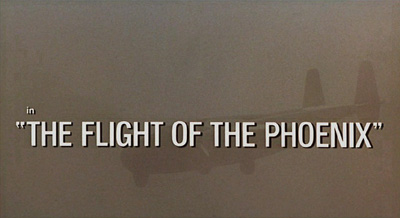

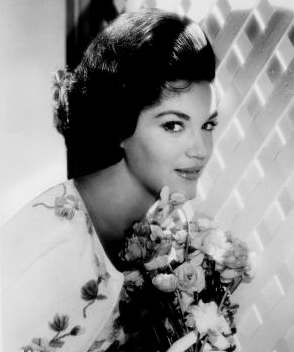



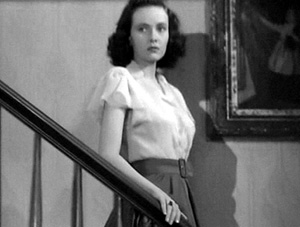
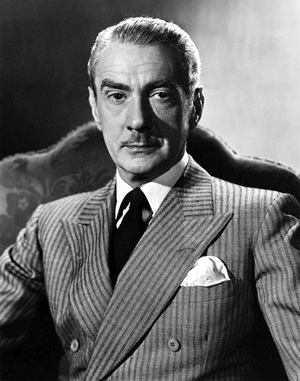



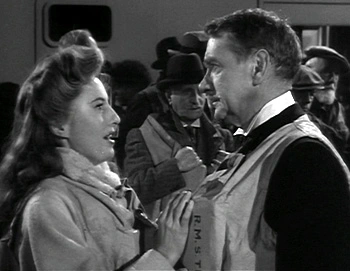
 Which leads me to something that both Paris Hilton and I have in common (it’s not a sex tape, appearing in movies that leave theaters empty or performing in burlesque shows with the Pussycat Dolls–although the latter kind of sounds like it would be fun, as long as I don’t have to take it all off): making lists. I know a lot of people say lists are for lazy people and I know that others out and out despise them, but I love them. And with that, I give you 5 Good Reasons on Why
Which leads me to something that both Paris Hilton and I have in common (it’s not a sex tape, appearing in movies that leave theaters empty or performing in burlesque shows with the Pussycat Dolls–although the latter kind of sounds like it would be fun, as long as I don’t have to take it all off): making lists. I know a lot of people say lists are for lazy people and I know that others out and out despise them, but I love them. And with that, I give you 5 Good Reasons on Why 
